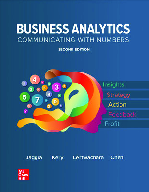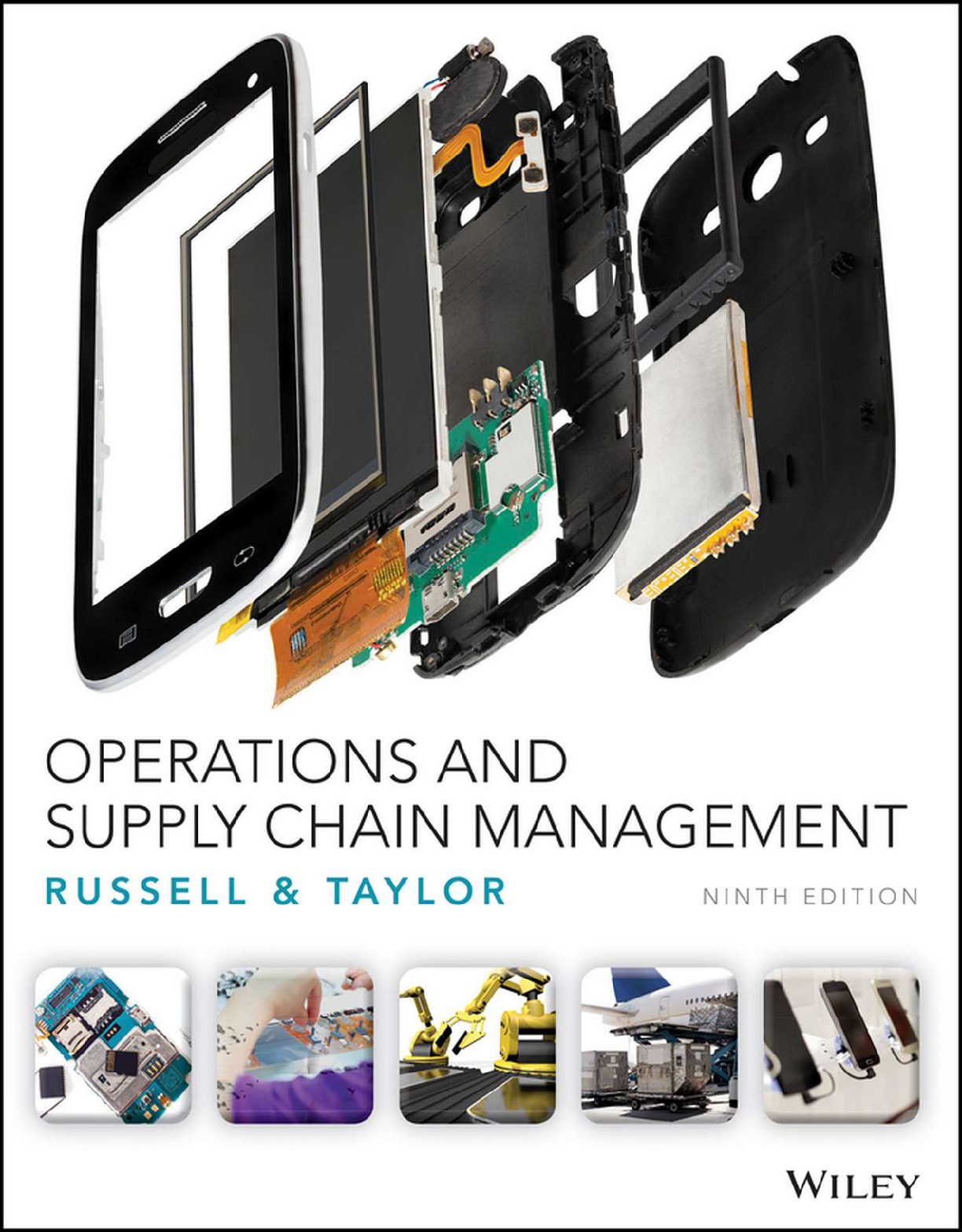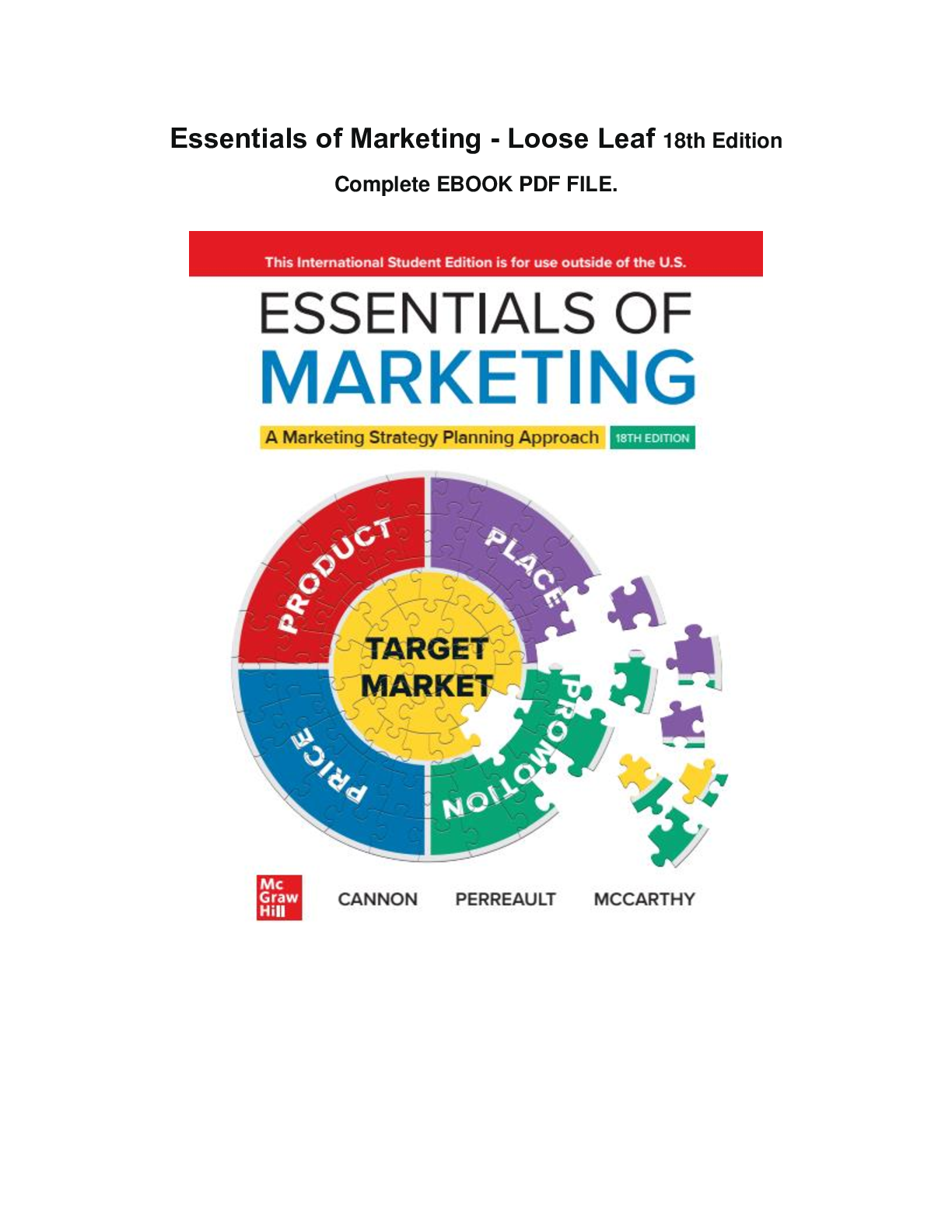Information Technology > eBook-PDF > Introduction to Information Systems, 6th Edition By Kelly Rainer | [eBook] [PDF] (All)
Introduction to Information Systems, 6th Edition By Kelly Rainer | [eBook] [PDF]
Document Content and Description Below
Introduction to Information Systems, 6th Edition By Kelly Rainer | [eBook] [PDF] | Title Page Chapter 1: Introduction to Information Systems 1.1 Why Should I Study Information Systems? The In... formed User—You! IT Offers Career Opportunities Managing Information Resources 1.2 Overview of Computer-Based Information Systems Types of Computer-Based Information Systems 1.3 How Does IT Impact Organizations? IT Impacts Entire Industries IT Reduces the Number of Middle Managers IT Changes the Manager’s Job Will IT Eliminate Jobs? IT Impacts Employees at Work 1.4 Importance of Information Systems to Society IT Affects Our Quality of Life The Robot Revolution Is Here Now Improvements in Healthcare Chapter 2: Organizational Strategy, Competitive Advantage, and Information Systems 2.1 Business Processes Cross-Functional Processes Information Systems and Business Processes 2.2 Business Process Reengineering, Business Process Improvement, and Business Process Management 2.3 Business Pressures, Organizational Responses, and Information Technology Support Business Pressures Organizational Responses 2.4 Competitive Advantage and Strategic Information Systems Porter’s Competitive Forces Model Porter’s Value Chain Model Strategies for Competitive Advantage Business–Information Technology Alignment Chapter 3: Ethics and Privacy 3.1 Ethical Issues Ethical Frameworks Ethics in the Corporate Environment Ethics and Information Technology 3.2 Privacy Electronic Surveillance Personal Information in Databases Information on Internet Bulletin Boards, Newsgroups, and Social Networking Sites Privacy Codes and Policies International Aspects of Privacy Chapter 4: Information Security 4.1 Introduction to Information Security 4.2 Unintentional Threats to Information Systems Human Errors Social Engineering 4.3 Deliberate Threats to Information Systems Espionage or Trespass Information Extortion Sabotage or Vandalism Theft of Equipment or Information Identity Theft Compromises to Intellectual Property Software Attacks Alien Software Supervisory Control and Data Acquisition Attacks Cyberterrorism and Cyberwarfare 4.4 What Organizations Are Doing to Protect Information Resources 4.5 Information Security Controls Physical Controls Access Controls Communications Controls Business Continuity Planning Information Systems Auditing Chapter 5: Data and Knowledge Management 5.1 Managing Data The Difficulties of Managing Data Data Governance 5.2 The Database Approach The Data Hierarchy Database Management Systems 5.3 Big Data Defining Big Data Characteristics of Big Data Issues with Big Data Managing Big Data Putting Big Data to Use Big Data Used in the Functional Areas of the Organization 5.4 Data Warehouses and Data Marts Describing Data Warehouses and Data Marts A Generic Data Warehouse Environment 5.5 Knowledge Management Concepts and Definitions Knowledge Management Systems The KMS Cycle 5.6 Appendix: Fundamentals of Relational Database Operations Query Languages Entity-Relationship Modeling Normalization and Joins Chapter 6: Telecommunications and Networking 6.1 What Is a Computer Network? Local Area Networks Wide Area Networks Enterprise Networks 6.2 Network Fundamentals Communications Media and Channels Network Protocols Types of Network Processing 6.3 The Internet and the World Wide Web Accessing the Internet The Future of the Internet The World Wide Web 6.4 Network Applications: Discovery Search Engines and Metasearch Engines Publication of Material in Foreign Languages Portals 6.5 Network Applications: Communication Electronic Mail Web-Based Call Centers Electronic Chat Rooms Voice Communication Unified Communications Telecommuting 6.6 Network Applications: Collaboration Crowdsourcing Electronic Teleconferencing and Video Conferencing 6.7 Network Applications: Educational E-Learning and Distance Learning Virtual Universities Chapter 7: E-Business and E-Commerce 7.1 Overview of E-Business and E-Commerce Definitions and Concepts Types of E-Commerce Major E-Commerce Mechanisms Electronic Payment Mechanisms Benefits and Limitations of E-Commerce 7.2 Business-to-Consumer (B2C) Electronic Commerce Electronic Storefronts and Malls Online Service Industries Issues in E-Tailing 7.3 Business-to-Business (B2B) Electronic Commerce Sell-Side Marketplaces Buy-Side Marketplaces Electronic Exchanges 7.4 Ethical and Legal Issues in E-Business Ethical Issues Legal and Ethical Issues Specific to E-Commerce Chapter 8: Wireless, Mobile Computing, and Mobile Commerce 8.1 Wireless Technologies Wireless Devices Wireless Transmission Media 8.2 Wireless Computer Networks and Internet Access Short-Range Wireless Networks Medium-Range Wireless Networks Wide-Area Wireless Networks 8.3 Mobile Computing and Mobile Commerce Mobile Commerce Mobile Commerce Applications 8.4 The Internet of Things Radio-Frequency Identification Examples of the Internet of Things in Use 8.5 Wireless Security Chapter 9: Social Computing 9.1 Web 2.0 Tagging Really Simple Syndication Blogs Microblogging Wikis Social Networking Web Sites Enterprise Social Networks Mashups 9.2 Fundamentals of Social Computing in Business 9.3 Social Computing in Business: Shopping Ratings, Reviews, and Recommendations Group Shopping Shopping Communities and Clubs Social Marketplaces and Direct Sales Peer-to-Peer Shopping Models 9.4 Social Computing in Business: Marketing Advertising Market Research Conducting Market Research Using Social Networks 9.5 Social Computing in Business: Customer Relationship Management 9.6 Social Computing in Business: Human Resource Management Recruiting Finding a Job Employee Development Chapter 10: Information Systems within the Organization 10.1 Transaction Processing Systems 10.2 Functional Area Information Systems Information Systems for Accounting and Finance Information Systems for Marketing Information Systems for Production/Operations Management Information Systems for Human Resource Management Reports 10.3 Enterprise Resource Planning (ERP) Systems ERP II Systems Benefits and Limitations of ERP Systems Implementing ERP Systems Enterprise Application Integration 10.4 ERP Support for Business Processes The Procurement, Fulfillment, and Production Processes Interorganizational Processes: ERP with SCM and CRM Chapter 11: Customer Relationship Management and Supply Chain Management 11.1 Defining Customer Relationship Management Customer Touch Points Data Consolidation 11.2 Operational Customer Relationship Management Systems Customer-Facing Applications Customer-Touching Applications 11.3 Analytical Customer Relationship Management Systems 11.4 Other Types of Customer Relationship Management On-Demand CRM Systems Mobile CRM Systems Open-Source CRM Systems Social CRM 11.5 Supply Chains The Structure and Components of Supply Chains 11.6 Supply Chain Management The Push Model Versus the Pull Model Problems Along the Supply Chain Solutions to Supply Chain Problems 11.7 Information Technology Support for Supply Chain Management Electronic Data Interchange (EDI) Extranets Portals and Exchanges Chapter 12: Business Intelligence 12.1 Managers and Decision Making The Manager’s Job and Decision Making Why Managers Need IT Support What Information Technologies are Available to Support Managers? A Framework for Computerized Decision Analysis 12.2 What is Business Intelligence? The Scope of Business Intelligence 12.3 Business Intelligence Applications for Data Analysis Multidimensional Analysis or Online Analytical Processing Data Mining Decision Support Systems 12.4 Business Intelligence Applications for Presenting Results Dashboards Data Visualization Technologies Real-Time BI Chapter 13: Acquiring Information Systems and Applications 13.1 Planning for and Justifying IT Applications IT Planning Evaluating and Justifying IT Investment: Benefits, Costs, and Issues 13.2 Strategies for Acquiring IT Applications Purchase a Prewritten Application Customize a Prewritten Application Lease the Application Application Service Providers and Software-as-a-Service Vendors Use Open-Source Software Outsourcing Continuous Development Employ Custom Development 13.3 The Traditional Systems Development Life Cycle Systems Investigation Systems Analysis Systems Design Programming and Testing Implementation Operation and Maintenance 13.4 Alternative Methods and Tools for Systems Development Joint Application Design Rapid Application Development Agile Development End-User Development Tools for Systems Development Technology Guide 1: Hardware TG 1.1 Introduction to Hardware TG 1.2 Strategic Hardware Issues TG 1.3 Computer Hierarchy Supercomputers Mainframe Computers Microcomputers Laptop and Notebook Computers Tablet Computers Wearable Computers (Wearables) TG 1.4 Input and Output Technologies TG 1.5 The Central Processing Unit How the CPU Works Advances in Microprocessor Design Computer Memory Technology Guide 2: Software TG 2.1 Software Issues Software Defects Software Licensing Open Systems Open-Source Software TG 2.2 Systems Software TG 2.3 Application Software Technology Guide 3: Cloud Computing TG 3.1 Introduction to Cloud Computing TG 3.2 What Is Cloud Computing? Cloud Computing Characteristics TG 3.3 Different Types of Clouds Public Cloud Private Cloud Hybrid Cloud Vertical Clouds TG 3.4 Cloud Computing Services Infrastructure-as-a-Service Platform-as-a-Service Software-as-a-Service TG 3.5 The Benefits of Cloud Computing Benefit 1: Cloud Computing Has a Positive Impact on Employees Benefit 2: Cloud Computing Can Save Money Benefit 3: Cloud Computing Can Improve Organizational Flexibility and Competitiveness TG 3.6 Concerns and Risks with Cloud Computing Concern 1: Legacy IT Systems Concern 2: Reliability Concern 3: Privacy Concern 4: Security Concern 5: The Regulatory and Legal Environment Concern 6: Criminal Use of Cloud Computing TG 3.7 Web Services and Service-Oriented Architecture Technology Gude 4: Intelligent Systems TG 4.1 Introduction to Intelligent Systems TG 4.2 Expert Systems The Components of Expert Systems Applications, Benefits, and Limitations of Expert Systems TG 4.3 Neural Networks TG 4.4 Fuzzy Logic TG 4.5 Genetic Algorithms TG 4.6 Intelligent Agents Information Agents Monitoring and Surveillance Agents User Agents Index End User License Agreement Read More [Show More]
Last updated: 9 months ago
Preview 1 out of 504 pages

Buy this document to get the full access instantly
Instant Download Access after purchase
Buy NowInstant download
We Accept:

Reviews( 0 )
$26.00
Can't find what you want? Try our AI powered Search
Document information
Connected school, study & course
About the document
Uploaded On
Mar 13, 2022
Number of pages
504
Written in
Additional information
This document has been written for:
Uploaded
Mar 13, 2022
Downloads
0
Views
367





















, Latest Questions and Answers with Explanations, All Correct Study Guide, Download to Score A.png)



